
May 16, 2004
Isaac Leung (P.Eng.) got a degree in Engineering Physics followed by a Master's in Electrical Engineering after which he promptly got a job as a product engineer at a company which makes high speed datacom chips. He is old enough to have cut his computer teeth on Commodore 64's and first played with OS/2 1.3 EE while at a summer job with IBM. The first PC he ever owned came with Windows 95, but he soon slapped on OS/2 Warp 3 and has been Warping ever since. He has agreed to work for Transmeta while he continues plotting to take over the world.
If you have a comment about the content of this article, please feel free to vent in the OS/2 e-Zine discussion forums.
There is also a Printer Friendly version of this page.
|
Previous Article |
|
Next Article |

Quickies...
This month, we have a quick peek at some fun, and sometimes useful little utilities that you may not have heard about.Mars24
Mars24 is a Java based application which you can actually download from NASA.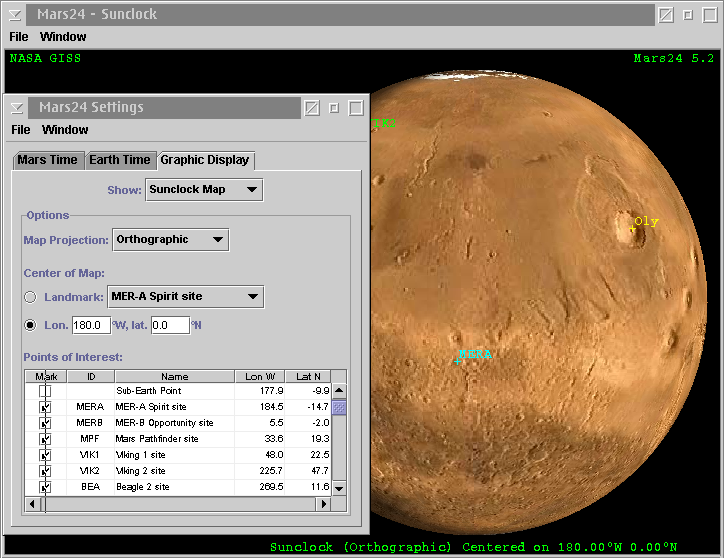
Not surprisingly, it is a clock displaying Martian time. But it is a bit more than that. It also shows the landing sites (or planned) of the various Mars exploration craft (both successful and unsuccessful). As well, you can show various projections of the map, and even include a "sun clock" view, which shows what a given surface view looks like, including sunlight.
Mars24 requires Java 1.3.1 or later. You can freely download Mars24 from NASA.
PMGlobe
Yeah, this is a real oldie (IBM EWS), but still a goodie. It shows a picture of (you guessed it), the Earth.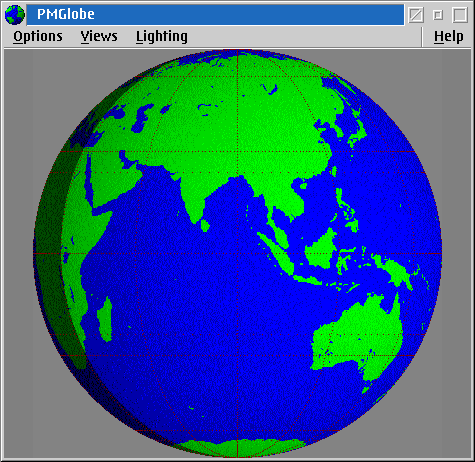
But there's more to it than just a simple picture. It will show the globe from various
points of view, and include the daylight/night line and also various types of twilight (I didn't even know there's more than 1 definition)!
Aaah, but perhaps none more useful than what's shown above. With the click of a mouse,
you can get an estimate of the distance between any two points on the globe.
How's that for handy?
PMGlobe is a PM application and should work from Warp 3 upwards, maybe even less.
You can freely download PMGlobe from here or other sources.
For you stargazers, it might be a handy little tool for locating the constellation in your
part of the world, at a given time of day. It even notes the locations of major stars and
the planets.
Be warned though, it does have a little year 2000 bug. On startup, it thinks it is the
year 1904. However, you can manually set the time to the correct date, and it appears
to be happy after that ... at least until the next re-start.
You can download Sky Chart from here, but other locations for it are getting hard to find!
It's sort of like a file browser (maybe we can ask him to have it show regular files!), but
only for pictures. If you're running a high resolution screen and you find the icons
for Lighttables getting too small, this might be just the solution for you. You can
choose from 3 different sizes of display, and even the medium was plenty large for
my 1400x1050 resolution.
It can be handy for viewing and organizing your digital photographs. Sorting and simple rotations are supported.
It will even work as an automated slide show viewer (full screen, no menus or window bars to get in the way).
Please support Jasper by at least sending him a note of appreciation. He does this on his
own free time, even though he is suffering from RSI (repetitive stress injury) from
programming too much! You can freely download PMSheet and get more information from the author's web site.
You can measure distances and angles between atoms and even look at properties of atoms. (It
includes a table with atomic mass, number, van der Waal radius, covalent radius, etc). The
image can be easily rotated and manipulated with the mouse. Jmol is a relative light-weight
in terms of resource usage, and it is very fast even on a PII-300MHz machine.
Jmol version 9 is the latest stable, released version. Java 1.3.1 or higher is required.
If you're testing Jmol version 10, you may need Java 1.4, but it will still work fine under OS/2.
Be warned that if you're using Java 1.4 (GoldenCode at least),
it will fail to work if you're also using the Chinese/DBCS input tools for Java. I don't know which tool is to blame.
You can freely download (i.e. open-source) Jmol from Sourceforge.
SkyChart
While we're on an astronomical theme here, might as well take a look at SkyChart.
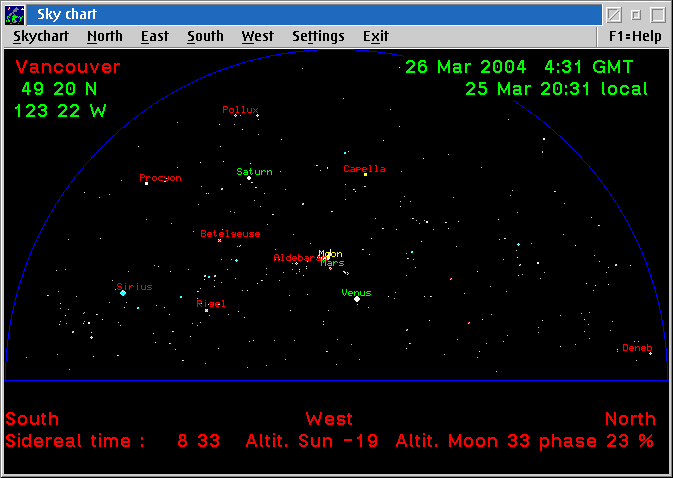
PMSheet
Lastly, we should mention a more recent application by Jasper de Keijzer, also
of fame for writing DrawIt (see our previous OS/2 e-Zine review of DrawIt).
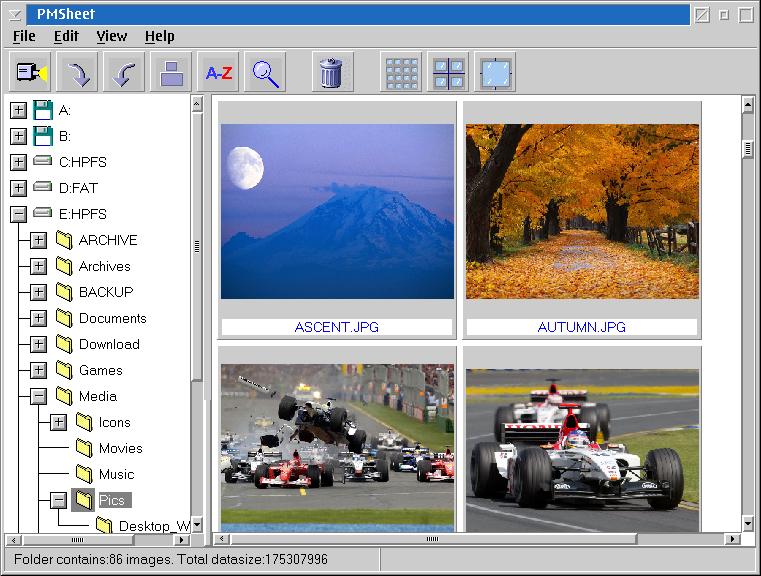
Jmol
Jmol is a Java version of of RasMol (a version has not been compiled for OS/2), which is a 3-D viewer for molecules of all sorts.
So, it would be very handy to chemists, biologists, physicists and even for teachers.
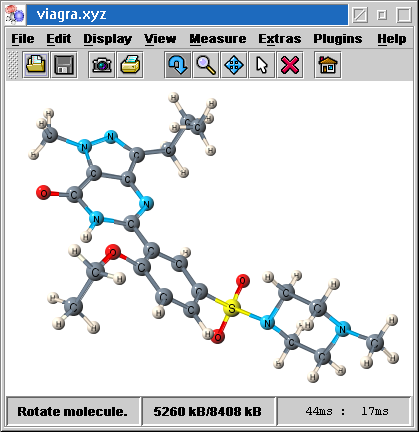
Or maybe even just for general interest. The application comes with a few "demo" molecular
models. Shown above is the molecule for Viagra. Also included are models for Aspirin, buckeyballs, benzene, caffeine and several others.
Jmol will accept various standard types of molecular description files.
|
Previous Article |
|
Next Article |